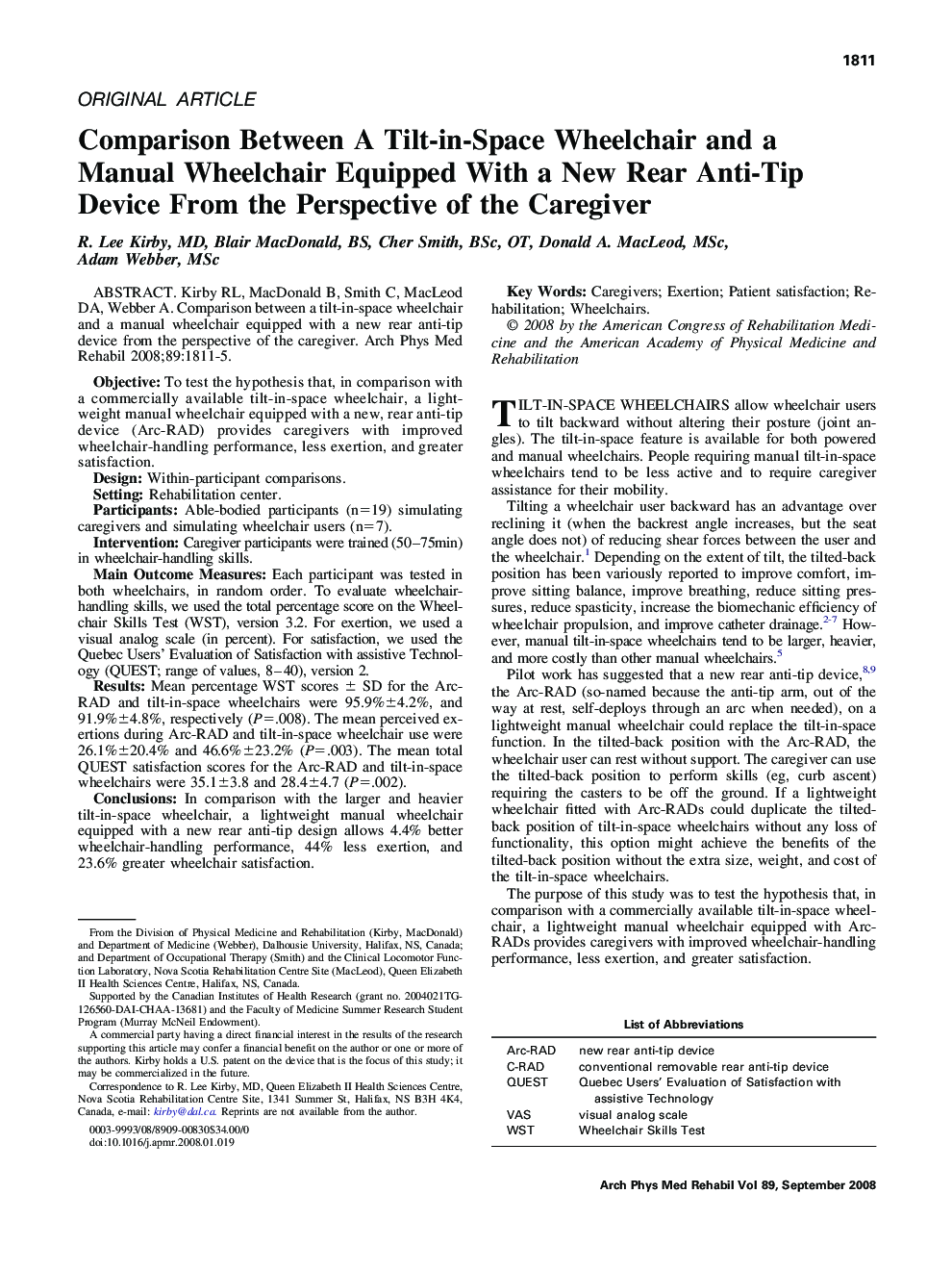| کد مقاله | کد نشریه | سال انتشار | مقاله انگلیسی | نسخه تمام متن |
|---|---|---|---|---|
| 3450461 | 1595775 | 2008 | 5 صفحه PDF | دانلود رایگان |

Kirby RL, MacDonald B, Smith C, MacLeod DA, Webber A. Comparison between a tilt-in-space wheelchair and a manual wheelchair equipped with a new rear anti-tip device from the perspective of the caregiver.ObjectiveTo test the hypothesis that, in comparison with a commercially available tilt-in-space wheelchair, a lightweight manual wheelchair equipped with a new, rear anti-tip device (Arc-RAD) provides caregivers with improved wheelchair-handling performance, less exertion, and greater satisfaction.DesignWithin-participant comparisons.SettingRehabilitation center.ParticipantsAble-bodied participants (n=19) simulating caregivers and simulating wheelchair users (n=7).InterventionCaregiver participants were trained (50–75min) in wheelchair-handling skills.Main Outcome MeasuresEach participant was tested in both wheelchairs, in random order. To evaluate wheelchair-handling skills, we used the total percentage score on the Wheelchair Skills Test (WST), version 3.2. For exertion, we used a visual analog scale (in percent). For satisfaction, we used the Quebec Users' Evaluation of Satisfaction with assistive Technology (QUEST; range of values, 8–40), version 2.ResultsMean percentage WST scores ± SD for the Arc-RAD and tilt-in-space wheelchairs were 95.9%±4.2%, and 91.9%±4.8%, respectively (P=.008). The mean perceived exertions during Arc-RAD and tilt-in-space wheelchair use were 26.1%±20.4% and 46.6%±23.2% (P=.003). The mean total QUEST satisfaction scores for the Arc-RAD and tilt-in-space wheelchairs were 35.1±3.8 and 28.4±4.7 (P=.002).ConclusionsIn comparison with the larger and heavier tilt-in-space wheelchair, a lightweight manual wheelchair equipped with a new rear anti-tip design allows 4.4% better wheelchair-handling performance, 44% less exertion, and 23.6% greater wheelchair satisfaction.
Journal: Archives of Physical Medicine and Rehabilitation - Volume 89, Issue 9, September 2008, Pages 1811–1815